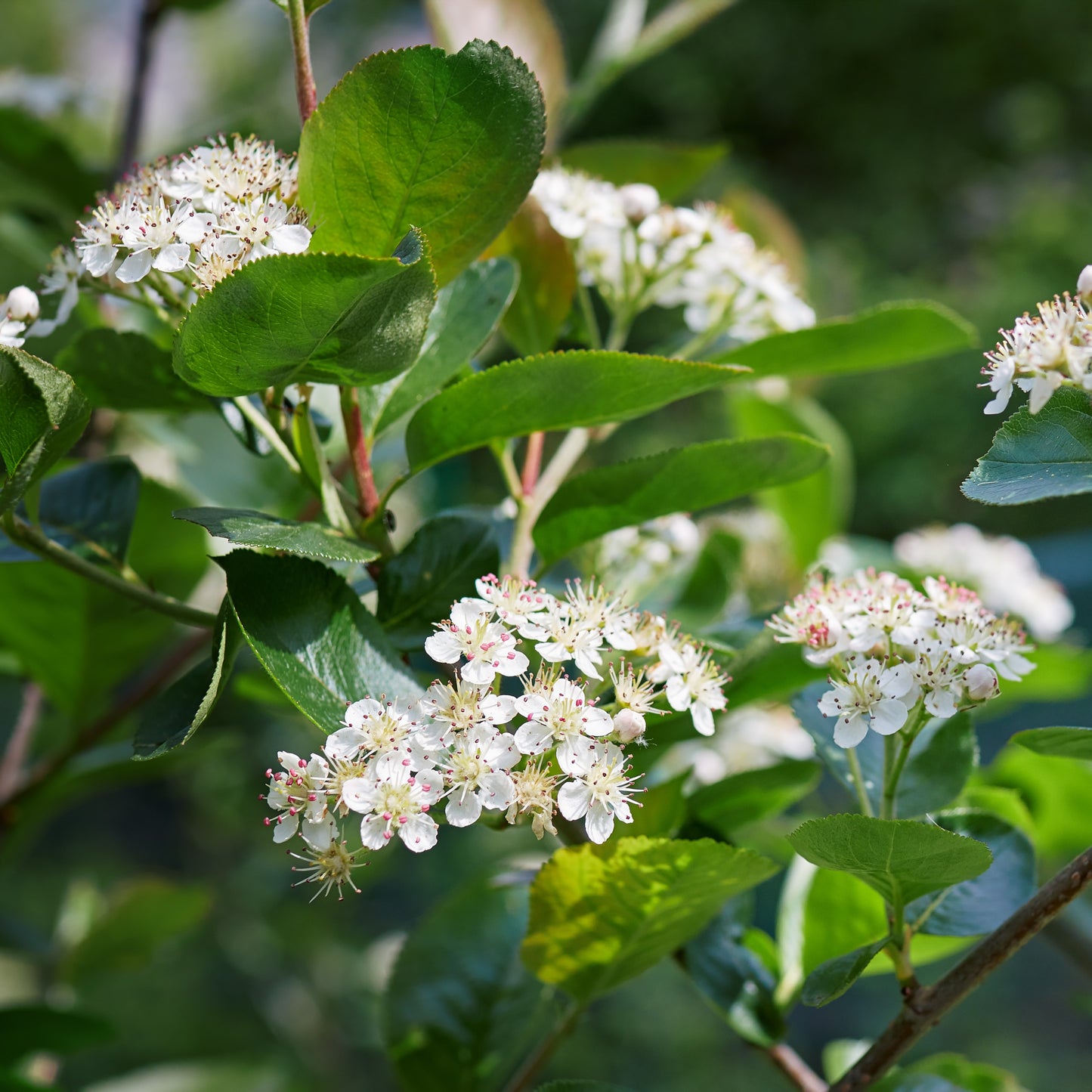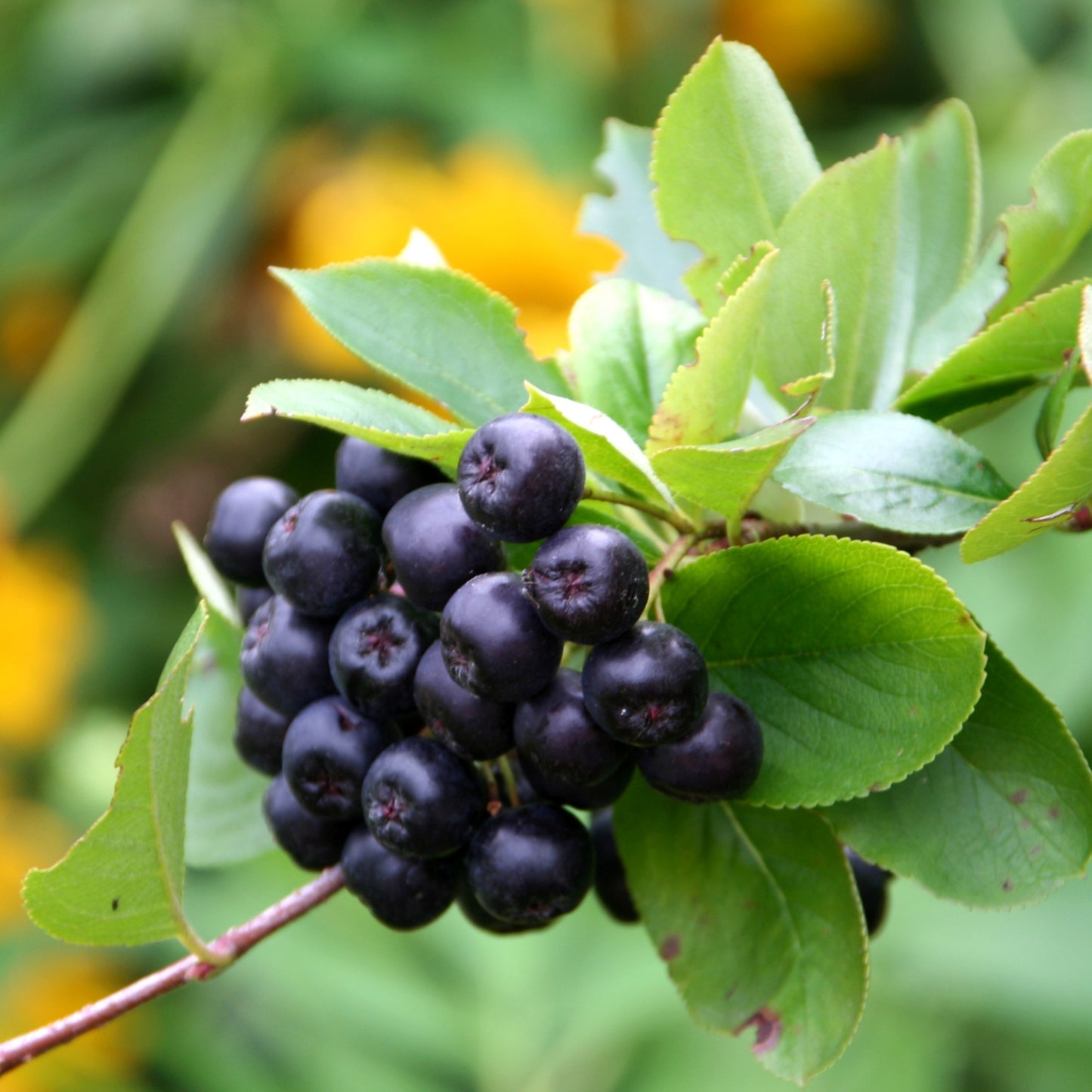Limited Quantities - Reserve Now For Fall
Black Chokeberry Shrub
Black Chokeberry Shrub
Couldn't load pickup availability
Aronia melanocarpa
The Common Chokeberry Shrub is a hardy, native shrub that offers four-season beauty, ecological benefits, and nutrient-rich black berries. It is highly valued for its showy white spring flowers, lush green summer foliage, edible black berries in fall, and brilliant red-orange autumn leaves. This low-maintenance, cold-hardy plant is ideal for wildlife gardens, hedgerows, erosion control, and rain gardens, making it a perfect choice for both ornamental and functional landscapes.
Common Chokeberry Shrub
| Attribute | Details |
|---|---|
| Variety | Rooted |
| Botanical Name | Aronia melanocarpa |
| Common Names | Common Chokeberry, Black Chokeberry, Aronia Berry |
| Mature Height | 3-8 feet |
| Mature Width | 3-6 feet |
| Growth Rate | Moderate to Fast (1-2 feet per year) |
| Lifespan | 40+ years |
| USDA Hardiness Zones | 3-8 |
| Sun Preference | Full sun to partial shade |
| Soil Type | Well-drained, loamy, sandy, or clay soils |
| Soil pH | Slightly acidic to neutral (5.5-7.5) |
| Water Needs | Moderate; drought-tolerant once established |
| Flowering Season | Spring (April-May) |
| Flower Color | White, showy clusters |
| Fruit | Small, black, astringent berries (August-September) |
| Fall Foliage | Brilliant red-orange |
| Wildlife Attraction | Bees, butterflies, birds, and pollinators |
| Growth Habit | Multi-stemmed, upright, dense shrub |
| Self-Pollinating? | Yes |
| Landscape Uses | Edible gardens, erosion control, hedges, wildlife plantings, rain gardens |
| Maintenance Level | Low |
Environmental Benefits
🌱 Erosion Control & Soil Stabilization – Thrives in wet and dry soils, preventing erosion on slopes and along waterways.
🐝 Wildlife & Pollinator Haven – Bees, butterflies, and birds benefit from its nectar-rich flowers and antioxidant-packed berries.
🌿 Adaptable & Low-Maintenance – Thrives in diverse conditions, making it perfect for urban, suburban, and rural landscapes.
🍂 Multi-Season Interest – Offers spring blossoms, edible summer berries, and fiery autumn foliage for year-round appeal.
Pros & Cons
| Pros | Cons |
|---|---|
| Four-season visual appeal with flowers, berries, and colorful fall foliage | Fresh berries are astringent and best used for juices, jams, and drying |
| Attracts pollinators and birds | May spread through suckering if not maintained |
| Resistant to pests and diseases | Requires full sun for best berry production |
| Tolerates wet and dry conditions | Birds may consume berries before harvest |
| Great for erosion control and rain gardens | May need occasional pruning to control shape |
Planting & Care Guide
- Spacing: Plant 3-6 feet apart for a hedge or 6-8 feet apart for individual shrubs
- Soaking: Soak bare root in water for 6-12 hours before planting
- Planting Depth: Dig a hole twice the width of the root system, ensuring roots are level with the soil surface
- Mulching: Apply a 2-3 inch layer of mulch to retain moisture and suppress weeds
- Pruning: Prune in late winter or early spring to remove dead wood and encourage new growth
- Fertilization: Apply a balanced fertilizer in early spring to support growth
- Watering: Water regularly in the first year, then reduce once established
The Common Chokeberry Shrub is a hardy, adaptable, and visually striking plant that brings beauty, ecological value, and functional benefits to any landscape. Whether you want to stabilize soil, attract wildlife, or enjoy antioxidant-rich berries, this low-maintenance, long-lived shrub is an excellent addition to both naturalized and formal plantings.
Share




